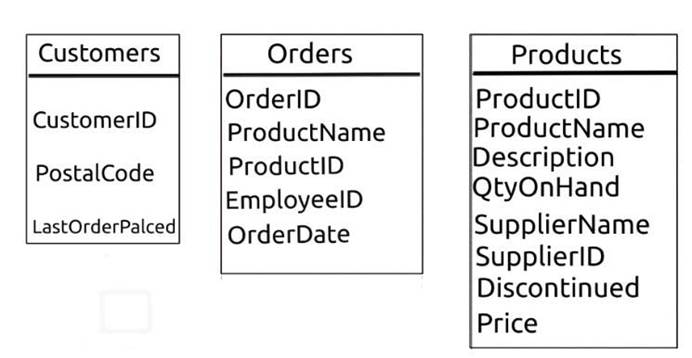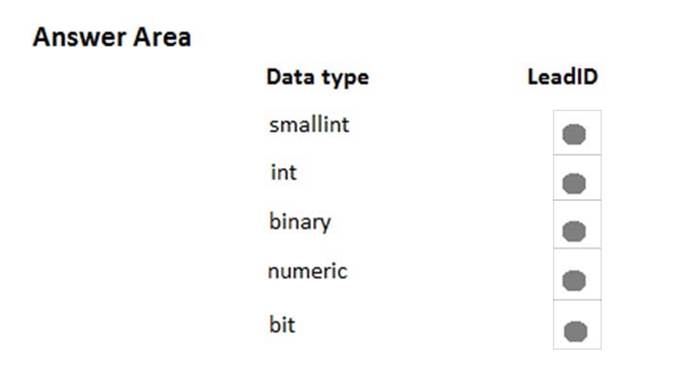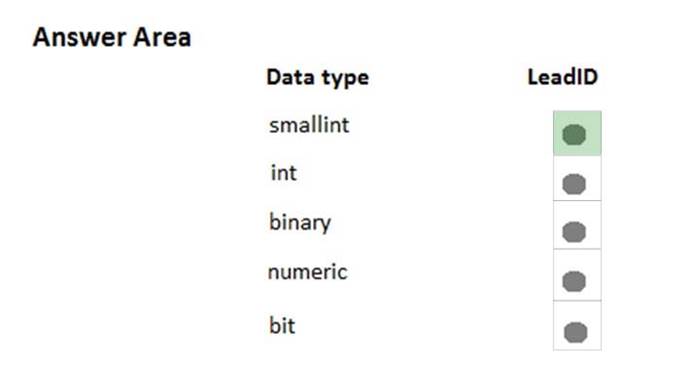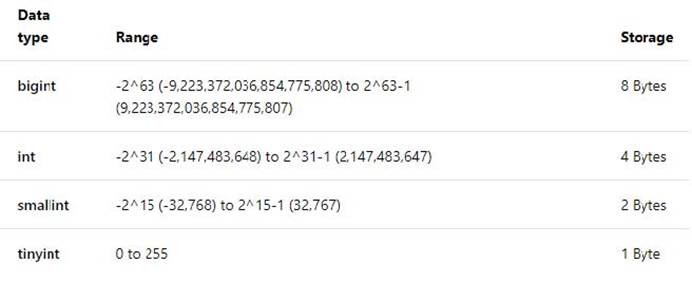HOTSPOT
This is a case study. Case studies are not timed separately. You can use as much exam time as you would like to complete each case.
However, there may be additional case studies and sections on this exam. You must manage your time to ensure that you are able to complete all questions included on this exam in the time provided.
To answer the questions included in a case study, you will need to reference information that is provided in the case study. Case studies might contain exhibits and other resources that provide more information about the scenario that is described in the case study. Each question is independent of the other questions in this case study.
At the end of this case study, a review scree will appear. This screen allows you to review your answers and to make changes before you move to the next section of the exam. After you begin a new section, you cannot return to this section.
To start the case study
To display the first question in this case study, click the Next button. Use the buttons in the left pane to explore the content of the case study before you answer the questions. Clicking these buttons displays information such as business requirements. Existing environment, and problem statements. If the case study has an All Information tab, note that the information displayed is identical to the information displayed on the subsequent tabs. When you are ready to answer a question, click the Question button to return to the question.
Background
You have a database named Sales.
The Customer table includes a column that stores the date for the last order that the customer placed.
You plan to create a table named Leads. The Leads table is expected to contain approximately 20,000 records. Storage requirements for the Leads table must be minimized.
Tables

The Leads table must include the columns described in the following table.

The data types chosen must consume the least amount of storage possible. You need to select the appropriate data types for the Leads table. In the table below, identify the data type that must be used for each table column. NOTE: Make only one selection in each column.

Answer: 
Explanation:
LeadID: smallint

IsCustomer: bit Bit is an integer data type that can take a value of 1, 0, or NULL. The SQL Server Database Engine optimizes storage of bit columns. If there are 8 or fewer bit columns in a table, the columns are stored as 1 byte. If there are from 9 up to 16 bit columns, the columns are stored as 2 bytes, and so on.
References:
https://docs.microsoft.com/en-us/sql/t-sql/data-types/int-bigint-smallint-and-tinyint-transact-sql
https://docs.microsoft.com/en-us/sql/t-sql/data-types/bit-transact-sql

Leave a Reply